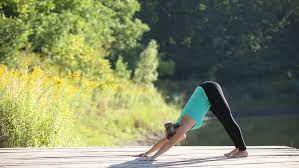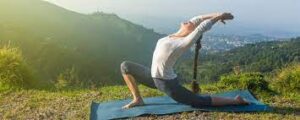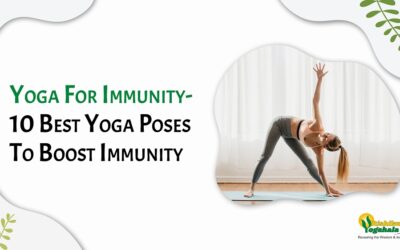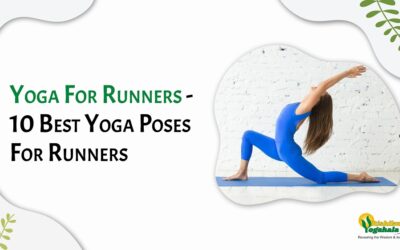In the Hindu mythology, ‘Anjaneyasana’ is a patronymic reference to Lord Hanuman, who was endowed with miraculous strength, power, and valor. Anjaneyasana is the Sanskrit term for the ‘Low Lunge Pose’ resembling a divine child (Anjaneya) with an arched back and reaching towards the sky, as depicted in the epics.
As a deep stretching yoga posture, Anjaneyasana gives a powerful stretch and strength to the groins, quadriceps, and iliopsoas of the back legs. The Low Lunge Pose is a perfect combination of balance, backbend, and stretch bringing in lives of the practitioners a strong sense of union, a certain degree of openness in the hips, and all-embracing goodness.

In order to maximize the benefits of Low Lunge Pose, it’s practice with attention to detail and alignment is crucial. Have a look at the steps of Anjaneyasana:
1. To perform the Low Lunge Pose, come into Downward-Facing Dog Position (Adho-Mukha Svanasana).
2. Upon exhalation, bring the right foot in front between the hands.
3. Lower down onto your left knee and rest the top of the left foot on a yoga mat. (Fingers and toes pointing straight back).
4. The right knee should be stacked directly over the right ankle. Make sure it isn’t moving forward towards the toes or outward to the left or right side (this alignment keeps the knee safe from injury).
5. Place your hands on your right knee, roll back your shoulders, gently transfer your weight down in the hips, and draw the tailbone towards the ground.
6. Hoist your arms up alongside your ears, palms facing each other or in Anjali mudra.
7. Breathe and lengthen the spine.
8. Let your head tilt back naturally and look up at the sky.

Tips for Practicing the Low Lunge Pose:
- If you feel unbalanced in the pose, practice it either against a wall or with a yoga bolster for more stability and correct placement of the body parts.
- During the performance of this pose, if you feel pain or discomfort in the back knee, rest it over a folded blanket.
- Pay attention to the placement of the feet and legs in the posture for overall balance.
- Always practice the Low Lunge Posture within your range of limit.
Top Seven Health Benefits of Anjaneyasana:
Activates the Functioning of Thyroid Glands: In the Low Lunge Pose, as you raise your hands up the head, it tilts the back naturally giving the neck muscles around the thyroid region a good stretch. The stretch stimulates the thyroid glands giving a boost to the body’s metabolic functions.
A Heart Opening Yoga Posture: Anjaneyasana is a heart opener yoga posture with health rewards of improved breathing and increased blood circulation. In the pose, lifting the chest forward allows the heart muscles to open and the lungs to expand. The better flow of prana, enhanced oxygen supply, and blood circulation are the resulting health benefits of Anjaneyasana.
Flexible Lower Body: The Low Lunge Pose strongly engages the hips, thighs, hamstrings, groins, and quadriceps that facilitates deep stretching and a greater range of motion. Owing to this benefit of low lunge pose, it is highly suitable for runners, athletes, cyclists, and those who spend days sitting.
Therapeutic for Sciatica: The Anjaneyasana is known to have therapeutic properties for sciatica pain as well. A regular performance of the pose can provide you relief from the excruciating sciatic pain all along the leg.
Beneficial for Abdomen: Like all other heart openers, the Low Lunge Pose is also beneficial for the internal organs and the abdomen. The pose creates a wonderful opening in the abdomen improving its functions. A well working abdomen leads to effective digestion.
A Gentle Backbend: The Low Lunge Pose is considered a gentle backbend due to the arched back in the pose. The backbends increase the mobility of the spine thus improving posture, alleviating back and neck pain, and increasing body awareness.
An Alternative to Warrior I: Those who cannot perform the majestic Warrior I Pose (Virabhadrasana) due to various reasons can practice the Low Lunge Posture for health and wellness of the body, mind, and spirit.
Perform the Anjaneyasana and honor the power of patience, harmony, focus, and well-being.
However, those with any cardiac problems can avoid this posture.
To Know more about Anjaneyasana, join yoga teacher training in India.




